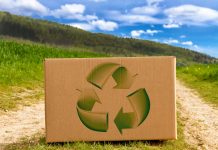The European Green Deal, theCircular Economy Action Plan (CEAP) and the Industrial Strategy identified textiles as a priority sector in which the EU can pave the way towards a carbon neutral, circular economy,and announced an EU Strategy on textiles. The EU has organized a series of consultation activities for all interested parties. A first public consultation ended on 2nd February, a second public consultation on the “Have Your Say” portal ended on 4th August 2021.
In the Commission Staff Working Document ‘Identifying Europe’s recovery needs’, which accompanied the Communication ‘Europe’s moment: Repair and Prepare for the Next Generation’, the Commission outlined the impact of the COVID-19 pandemic on the industrial ecosystem for textiles in the EU, identifying its recovery needs in the light of current and expected weaknesses on both the demand and supply sides. Problem the initiative aims to tackle.
Making fashion sustainable
Textiles and clothing make up a diverse industrial ecosystem covering different value chains and types of products. The industry employs 1.5 million people, spread across more than 160.000 companies in the EU, most of which are SMEs, with an EU annual turnover of EUR 162 billion in 2019. Despite a growing social trend for sustainability in the EU textile and fashion industry, Europeans consume on average 26 kg of textiles per person per year – a significant share of these coming from third countries. Each item is used for a shorter period, resulting in 11 kg of textiles discarded per person per year (what is known as the so-called ‘fast-fashion’ phenomenon).
What does the initiative aim to achieve and how
The aim of the initiative is to set in place a comprehensive framework to create conditions and incentives to boost the competitiveness, sustainability and resilience of the EU textile sector, taking into account its strengths and vulnerabilities, after a long period of restructuring and delocalization, and addressing its environmental and social impacts. It will ensure coherence and complementarity with initiatives under the European Green Deal, the Circular Economy Action Plan, the Industrial Strategy and the Chemicals Strategy for Sustainability.
The initiative will facilitate and encourage an optimal use of the recovery plan and sustainable investments, in particular in production processes, design, new materials, new business models, infrastructure and capacity. Support to technologies, including through digitalization, related to innovative textiles, tackling the release of microplastics, manufacturing and recycling processes will contribute to the digital and green transition.
To boost the EU market for sustainable and circular textiles, the initiative might consider setting targets to significantly step up reuse and recycling efforts as well as green public procurement in the EU. These objectives will be considered through a structured engagement with the industrial ecosystem and other stakeholders (i.e. research and innovation, consumer associations, investment companies, Member States, civil society), to allow for their swifter achievement, and to contribute to monitoring subsequent implementation of the initiative.
Design for sustainability
The initiative will propose actions to make the textile ecosystem fit for the circular economy, addressing weaknesses regarding sustainable production, sustainable lifestyles, presence of substances of concern, improving textile waste collection and recycling in the Member States as well as capacity building (also for skills).
The initiative will do so by identifying textile-specific and horizontal actions along the whole value chain. Taking into account the preparation of the Sustainable Products Initiative, the initiative will underline possible approaches for improving design for sustainability (ensuring the uptake of secondary raw materials and tackling the presence of hazardous chemicals, among others), facilitating its future implementation. The initiative will also propose actions to promote more sustainable production processes.
The extended producer responsibility
In addition, the initiatives will look into supporting more sustainable lifestyles, for instance by incentivizing ‘product as a service’ and other sustainable business models. The initiative will promote voluntary approaches such as the EU Ecolabel and look into maximizing the synergies within the New Consumer Agenda12 and the Bauhaus initiative.
The role of extended producer responsibility in promoting sustainable textiles and treatment of textile waste in accordance with the waste hierarchy will also be considered, and the implementation of the legal obligation to introduce separate collection of waste textiles by 2025 will be supported.
Finally, the initiative will explore how to reinforce the protection of human rights, environmental duty of care and due diligence across value chains, including improving traceability and transparency. It will steer international cooperation and partnerships, including aid for trade, towards more sustainable consumption and production patterns, including in terms of land and water use and the use of chemicals.










